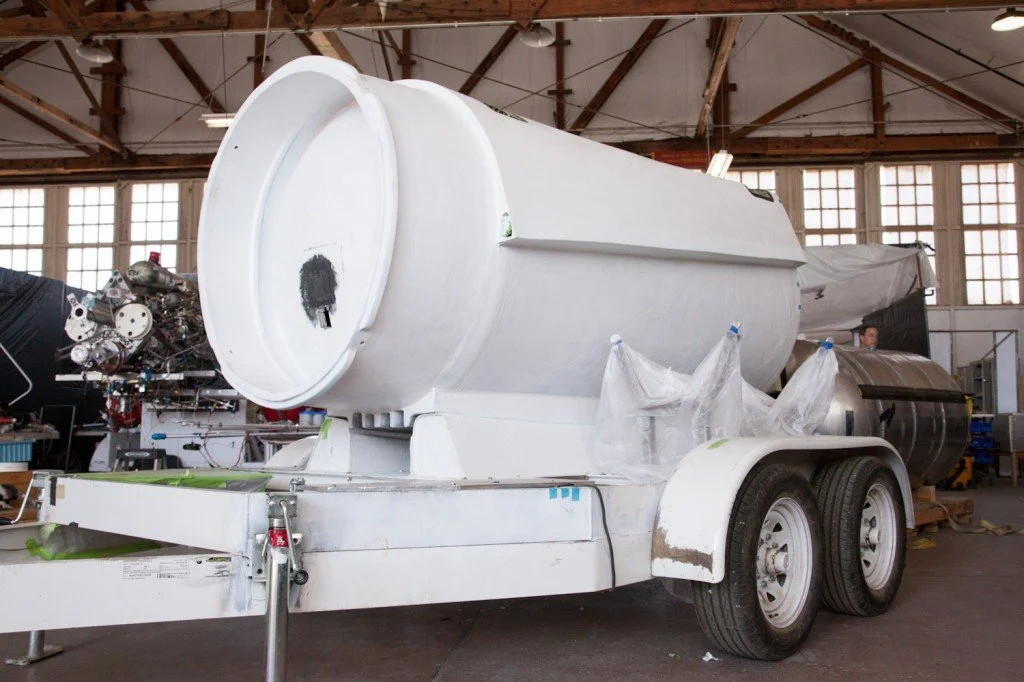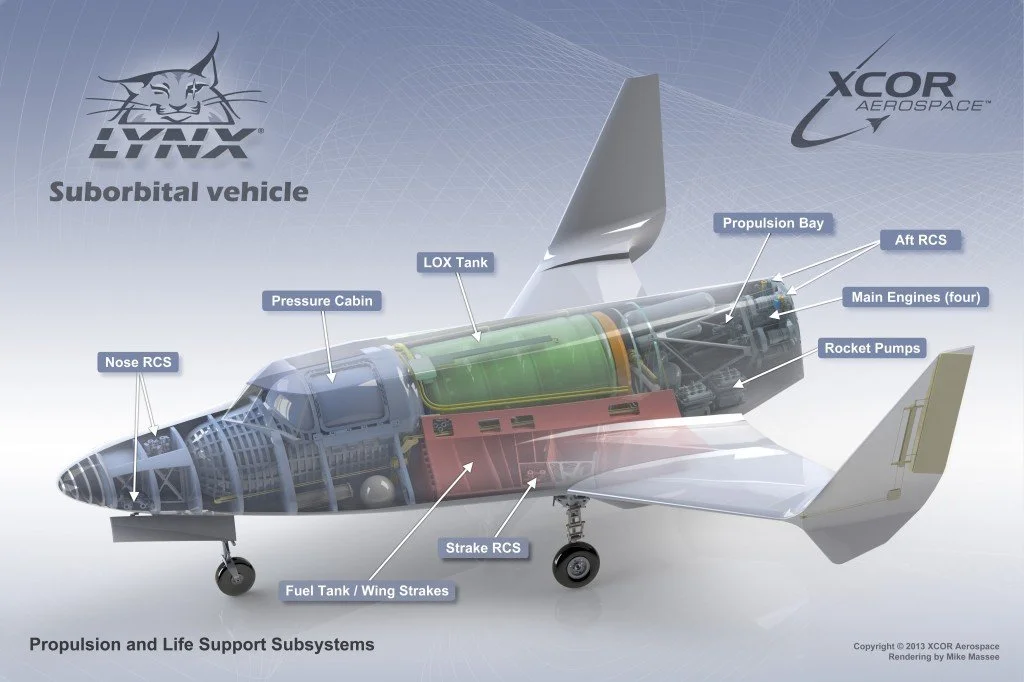XCOR Lynx: Fuselage 101
The Lynx flight weight fuselage is mounted on the fire wall test stand, awaiting re-installation of the engine truss structure.
On Wednesdays we highlight progress on various structural components such as the fuselage, strakes, wings, nose and landing gear.
Always build a house with a strong foundation. Always anchor a suspension bridge into bedrock. A similar principle holds true for spacecraft: they must always be built on a solid structural core that can stand up to flight in harsh environments.
The Lynx structure consists of several critical components: the fuselage (containing the liquid oxygen tank), the wings and control surfaces, wing strakes (containing our kerosene fuel, and main landing gear), cockpit, and nose (containing the nose landing
Our spacecraft is a complex assembly of highly-engineered structures designed to maximize strength and minimize weight. Each have their own functional requirements, and must serve the function of the vehicle as a whole. More so than any other application, form follows function very tightly on a high performance launch vehicle.
At the center of the Lynx is the fuselage. The fuselage holds the liquid oxygen tank, and all other major structural components attach to the fusleage. These include the truss structure that holds the propulsion system (Monday’s post), the cockpit (yesterday’s post), the wing strakes that hold the kerosene and the main landing gear, the nose structure, and the wings with their control surfaces.
The fuselage can be seen in the photo above. In it, the carbon fiber structure has been painted to protect it from the sun’s UV radiation, as UV can degrade the carbon fiber structure. The fuselage is sitting on its cradle on the Lynx firewall test stand, waiting for the propulsion system to be re-attached.

